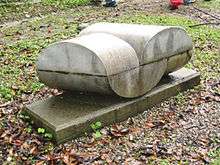Sérgio de Camargo

Sérgio de Camargo (April 8, 1930 – 1990) was a sculptor and relief maker, born in Rio de Janeiro, Brazil. De Camargo studied at the Academia Altamira in Buenos Aires under Emilio Pettoruti and Lucio Fontana. Camargo also studied philosophy at the Sorbonne in Paris. On a protracted trip through Europe in 1948, Camargo met Brâncuși, Arp, Henri Laurens and Georges Vantangerloo.
Sérgio de Camargo began to work in sculpture and his early pieces are reminiscent of Picasso and H. Laurens. Returning to Brazil in 1950, Camargo came into contact with Brazilian Constructivists. In 1952-53 he again returned to Europe and went to China in 1954. Between 1961 and 1974 Sérgio de Camargo remained in Paris, where he became a member of the Groupe de Recherche d'Art Visuel. During that period he concentrated on structuring monochrome white surfaces with cylindrical wooden reliefs in which the play of light and shadow alternates between order and chaos, fullness and emptiness. After this period of work, de Camargo returned to Brazil. There he contributed (1965-67) a monumental element to Oscar Niemeyer's Foreign Ministry in Brasília - a rhythmically structured 25-m wall. During the late 1960s Sérgio de Camargo showed work at numerous international exhibitions, marking the high point of the recognition accorded de Camargo's work outside Brazil (including a gold medal at the 1965 São Paulo Biennale; the 1966 Venice Biennale 1966; the 1968 documenta in Kassel). Sérgio de Camargo died in Rio de Janeiro in 1990. The Tate Gallery in London has one of de Camargo's work in their permanent collection.
References
Further reading
- Brecheret, Vítor. Brazilian sculpture from 1920 to 1990. Washington, DC: Cultural Center, Inter-American Development Bank, 1997.
- Brito, Ronaldo. Sergio Camargo: Espacos da arte brasileira. São Paulo: Cosac & Naify Edições, 2000.